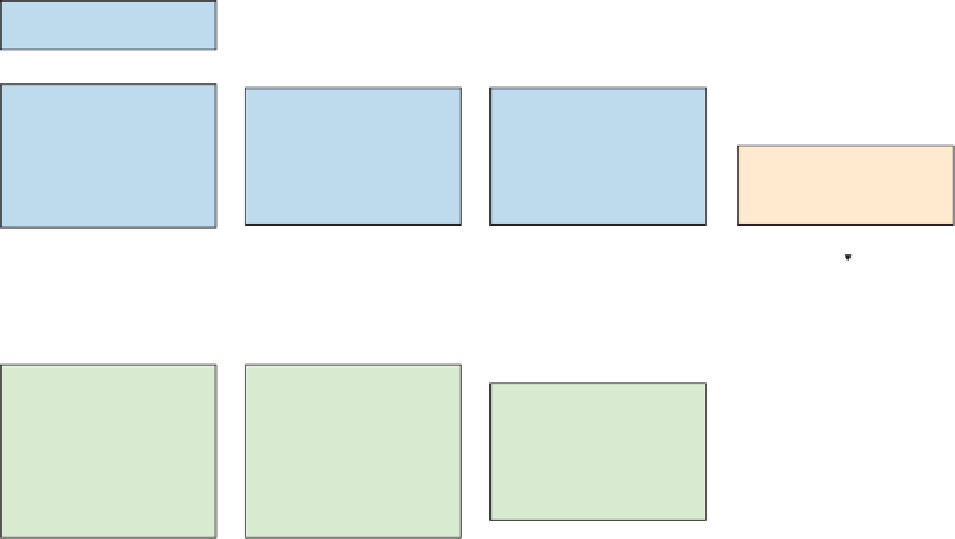Geology Reference
In-Depth Information
Statistical rock physics
Pseudo-wells
(likelihood relating
reservoir properties to
elastic properties)
Trace matching
(likelihood relating to
elastic properties to
seismic data)
Posterior for
reservoir properties
from seismic
waveforms
Spatial statistics for
reservoir properties
Vertical statistics for
reservoir properties
Conjunction of
reservoir properties
Multiple realisations of
reservoir properties
Reservoir properties
from analogue data
(likelihood relating
reservoir properties
to macro-facies)
Seismic facies
interpretation
(likelihood relating
macro-facies to
seismic data)
Posterior for
reservoir properties
from seismic facies
and well data
Kriged well data
(optional)
Figure 9.36
A possible geostatistical workflow involving trace matching with reservoir property statistics being combined with separately
mapped facies data (after Connolly,
2012
).
no commercially available software packages. To a
large extent Bayesian applications are still very much
in a research phase.
Adoption of new geostatistical techniques is
often hampered by the fact that geophysicists view
geostatistics sceptically as the application of sophisti-
cated random number generators in a black box
(Rowbotham et al.,
2003b
). Some authors seek more
transparency in the process, particularly so that there
is a broad understanding amongst the different dis-
ciplines that make up asset teams of how different
data sets are used. For example Connolly (
2012
) pro-
poses an approach in which uncertainties for each
data type are evaluated separately and then combined
towards the end of the process. The methodology
(
Fig. 9.36
) involves generating a large number of
synthetic traces (with data from a Bayesian posterior
distribution) and matching these to the seismic (i.e. a
1D fitting procedure which takes no account of spatial
dependencies). Generally speaking this is similar to
the incremental net pay thickness technique of Neff
(
1990a
,
1990b
,
1993
) and Burge and Neff (
1998
), the
HIT cube technique of Ayeni et al. (
2008
) and the
physics-driven inversion approach of Spikes et al.
(
2008
). Given the intimate relationship to the
background rock physics model, each synthetic trace
defines an arrangement of reservoir properties, with
the model fits providing statistical properties of each
reservoir parameter at the trace location. Litho-facies
are separately mapped from the seismic using a
combination of seismic attributes, geostatistical inter-
polation and analogue information, with mean and
standard deviation parameters being assigned to rock
properties such as net-to-gross. Lateral variograms
can then be utilised in the combination of facies and
reservoir property maps, with the final map set pro-
viding a basis for constraining further geostatistical
simulation.
221

































